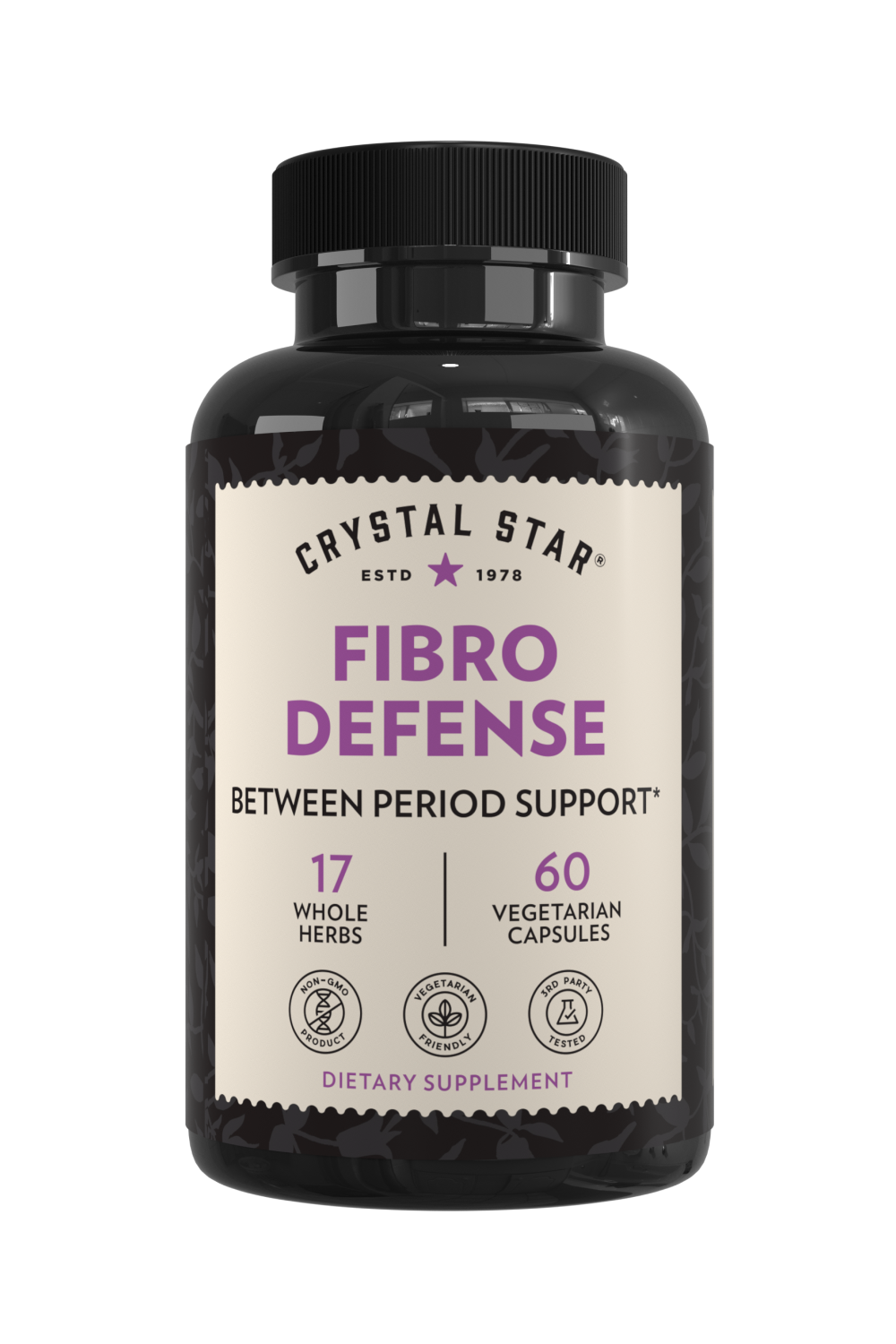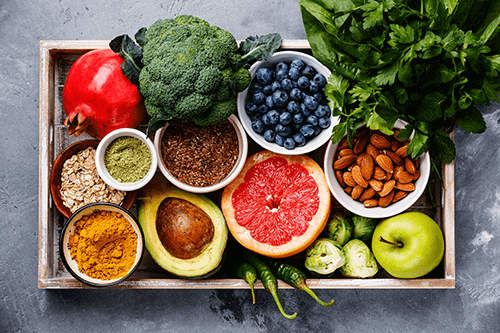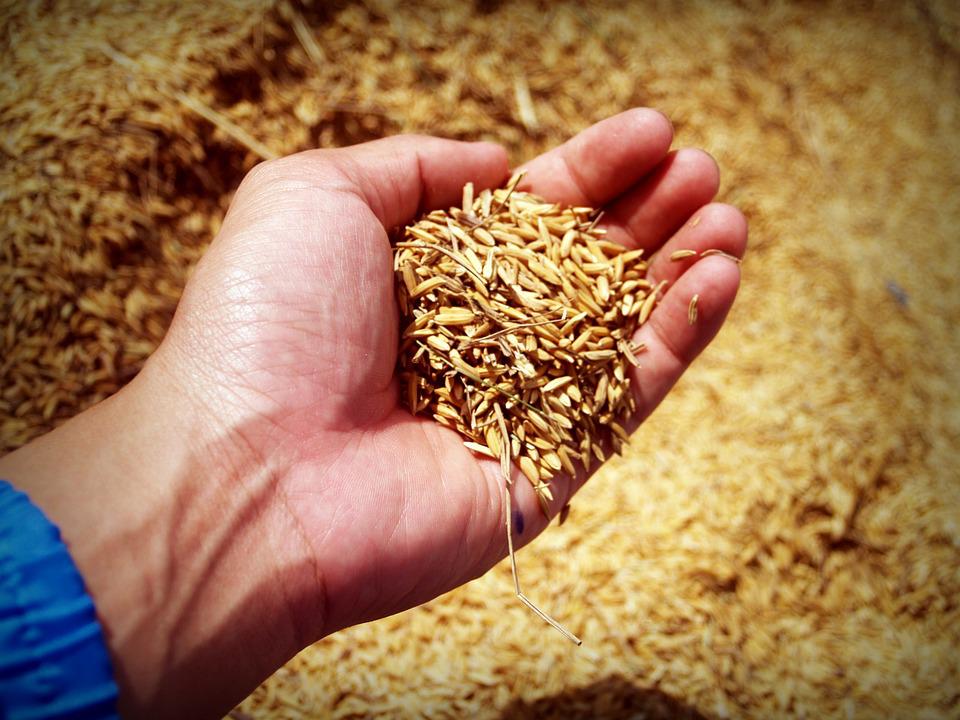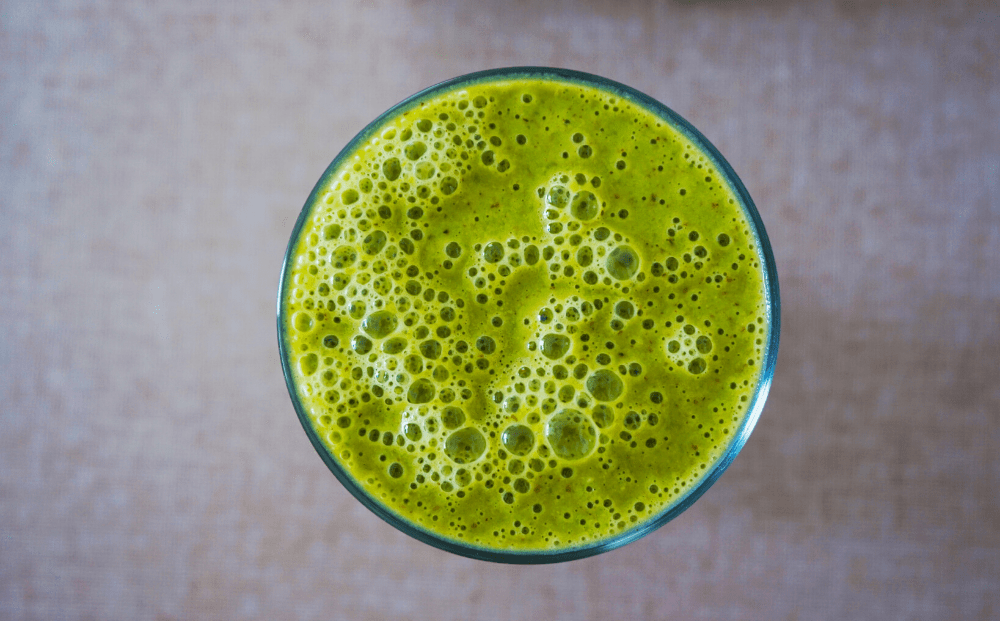
ALL THE BEST FERTILITY HACKS FOR WOULD-BE PARENTS
To promote optimal fertility
Food-based nutrients for men and women
Men and women can both benefit from a balanced diet with low intake of dairy, sugar, and refined carbohydrates, i.e. trading the “meat/sweet” diet for a more whole-food, plant-filled one. Try to use as much organic produce as possible on your budget, since pesticide residue and infertility are linked. Alternatively, you can avoid produce that tends to have the highest pesticides according to the Environmental Working Group’s (EWG) “dirty dozen”list .
Eat your omegas Omega essential fatty acids play an important part in ovulation and healthy sperm production, as well as producing vital sex hormones. However, since most Americans consume too much Omega-6 and too little Omega 3, it’s best to focus on foods with higher Omega-3 content. These include low-mercury fish like mackerel and sardines, flax and chia seeds, nuts, avocados, and leafy green vegetables (just make sure your kale is organic). Vitamin C Vitamin C boosts sperm health and swimming ability as well as progesterone (the hormone that prepares the uterus for pregnancy) production in women. It can also help your body absorb iron. Men should shoot for 90mg and women 75mg, but you can easily reach these levels through diet alone. Fruits with high levels of vitamin C include citrus and berries, and vegetables like potatoes, broccoli, brussels sprouts, cabbage, peppers, and tomatoes are also reliable sources. However, supplemental vitamin C can be a great choice if you or your partner have known age-related fertility problems like declining egg quality or abnormal sperm shape.
Additional fertility nutrition for women
Pump some iron If you’re vegan or vegetarian, consider loading up on iron-rich foods like legumes (particularly soy foods) and nuts and seeds; low iron levels are linked to infertility.
If you’re still concerned about your iron levels or are experiencing irregular menstrual cycles, consider adding lean protein like chicken or turkey breast as an occasional garnish, since iron from animal sources is the most bioavailable (i.e. easiest for your body to process). Trade skim for whole-fat dairy If you like dairy, stick to whole-fat organic products. While skim dairy products warrant more investigation, one 2007 study found that low-fat dairy increased infertility risk in women, while full-fat dairy lowered it.
Additional fertility nutrition for men
Focus on zinc Zinc is a superstar of male fertility. It’s vital for testosterone and sperm production and quality, and also helps protect the prostate from infection. And since we can only obtain it from food and supplements, your diet has a big impact on your zinc levels.
Since most men only need about 11mg of zinc a day, we recommend turning to whole foods before a zinc supplement. While most foods contain some amount of zinc, a few categories are more zinc-rich than others. These include seeds, nuts (especially cashews), shellfish, tofu, mushrooms, legumes, whole grains like oats, millet, or quinoa, eggs, non-hormone-treated dairy, lean poultry, and dark chocolate. Try adding a serving of at least one zinc-rich food with every meal. Add pumpkin seeds and a dollop of yogurt to your oatmeal, or replace croutons with cashews in a tofu-based salad and you’ll easily hit 11mg. Antioxidant vitamin E In addition to zinc, antioxidants are excellent for men’s reproductive health, and sperm motility-boosting vitamin E is an easy one to get from food—adults only need about 15mg a day. A 100g serving of sunflowers contains about 35mg of vitamin E, while the same amount of almonds contains about 26mg, so a handful of either with breakfast will have you set for the day. While it may seem more reliable to get your vitamin E in a capsule, some research has shown that synthetic vitamin E supplements may actually increase prostate cancer risk, so it’s a safer bet to stick to food sources.
Exercise (keep it moderate)
For women, high-intensity exercise of over an hour a day may increase the risk of infertility, while daily moderate-to-vigorous exercise actually lowers that risk. Likewise, men who train intensively risk lower sperm concentration, mobility, and quality. Like most health topics, it’s about balance. If you’re pretty sedentary and are having fertility issues, try starting with a brisk daily 30-minute walk. If, on the other hand, you’re hitting boot camp classes daily, try scaling back or incorporating less-intense exercise like a Hatha yoga class or even a short run or bike ride.When to use fertility supplements
While a well-rounded diet can often meet your fertility needs, it’s sometimes tough to get enough of some nutrients from food alone, and some people struggling with fertility may have specific nutrient deficiencies. That’s where supplements come in. Make sure your healthcare provider knows all of the medications and supplements you’re taking, and don’t double up on doses or throw in additional supplements on top of a multivitamin without checking in first. When it comes to vitamins, more isn’t necessarily better. Prenatal multivitamins for women For women, a high-quality prenatal multivitamin with bioavailable (i.e. whole-food-based ingredients) can cover a lot of bases. One 2018 study even found that the offspring of women who supplemented with folate and/or a multivitamin were less likely to develop autism, though researchers don’t yet know why. Supplements for men and womenFolate/Folic acid
Folic acid is a synthetic form of folate (a.k.a. vitamin B9), an important micronutrient that we can only get from food. Folate may help increase sperm count to increase the likelihood of pregnancy, and a developing embryo also needs folate to develop a healthy spinal cord and brain.
The Centers for Disease Control (CDC) recommend women and men get 400 micrograms (mcg) daily, while the Mayo Clinic recommends up to 800 mcg for women who might become pregnant. In a varied diet, you can get folate from dark leafy green vegetables, legumes, nuts, whole grains, bananas, citrus fruits, melons, and strawberries. Folic acid, meanwhile, can be found in fortified grains. But while diet may be a sufficient folate source for non-child-bearing adults, pregnant, nursing, or soon-to-be-pregnant women can benefit from supplementation. Some women with a common genetic mutation (called a MTHFR mutation) need to use specific forms of folate called methylated folate (MTHF or 5-MTHF on supplement labels). That said, methylated folate is safe even for women without this mutation. And unlike folic acid, MTHF is much easier for our bodies to absorb and process, reducing the risk of excess folic acid in your bloodstream, which may be not-great for your health.
Coenzyme Q10
If you’re a woman over age 35 and your multivitamin doesn’t include CoQ10, supplementing can help boost your egg quality. Men tend to have a bit longer before their sperm quality starts to decline most rapidly after age 40, but CoQ10 can also help improve it. What is L-carnitine? L-carnitine is an amino acid produced by the body and it plays a big part in metabolism and energy production. You can also obtain small amounts of l-carnitine by consuming poultry, meat, dairy, or fish. Most people won’t need l-carnitine supplements, but for men struggling with infertility it’s been shown to improve sperm motility and help protect sperm from heat damage. For women, l-carnitine may improve egg quality and fertility outcomes, including in women with polycystic ovarian syndrome (PCOS).Watch for early signs of pregnancy
Drugstore at-home pregnancy tests that look for pregnancy hormone hcG in your urine are 99% effective when taken after your first missed period (or in the days leading up to it in the case of early detection tests). But signs of pregnancy do sometimes crop up before your urine hcG levels spike.Spotting and discharge
Some women may experience light bleeding (a.k.a. spotting) anywhere from six to 12 days after an egg is fertilized. This phenomenon is called implantation bleeding, and it’s a side effect of a fertilized egg attaching to a woman’s uterine lining. Implantation bleeding can last for one or two days. Another possible tell? A change in your vaginal discharge, which may increase and become milky white and slippery (but still thin and low-odor), similar to the discharge changes you may have when you ovulate.Your basal body temperature is elevated
It’s possible to detect pregnancy earlier if you’ve been tracking your basal body temperature (BBT) every day. Your BBT is your baseline temperature, which you take first thing in the morning at the same time every day before any action (including talking or getting out of bed). Basal body temperature usually drops right before ovulation and increases sharply afterward, signalling the end of ovulation. But if your BBT stays elevated for more than 14 days after it has that sharp increase, this could be a sign that you’re pregnant.When to wonder about infertility
About 1/3 of fertility struggles originate in the male reproductive system, and another ⅓ are due to a problem in the female reproductive system. The remaining third of infertility cases are due to problems in both the male and female, or there’s no known cause. See your doctor if you haven’t conceived after six months to a year of regular intercourse (about 2-3x/week) to rule out (or manage) an underlying health conditions.
Common causes of female infertility
For women, common reproductive disorders that can affect your fertility include uterine fibroids, endometriosis, polycystic ovarian syndrome (PCOS), and fewer eggs or poor egg quality due to age, genetics, or lifestyle. their symptoms can range from barely-noticeable to severe. Scarring from pelvic inflammatory disease (PID)—a secondary disease usually caused by sexually transmitted infection (STI) like gonorrhea or chlamydia—can also make it tougher to get pregnant, as can thyroid disorders or a genetic predisposition towards early menopause. But all of these diagnoses come in shades of gray; having any one of these conditions does not automatically rule out pregnancy.Common causes of male infertility
Inflammation in the urogenital tract (like epididymitis) is one of the most common causes of reduced male fertility. Low sperm count, abnormal sperm shape, low testosterone and varicocele (an enlargement of a vein or veins in the scrotum) are other fertility problems men may face. Male sperm production and quality can also suffer from STIs, along with tobacco, drug, and alcohol use, and even prescription steroids. Structural problems in the testicles or urethra from injury or genetic predisposition can also reduce fertility, along with underlying diseases like celiac disease.Conclusion
Getting pregnant isn’t necessarily as easy as we’ve been brought up to believe. Even perfectly healthy partners or donors can use some luck and preparation.
Moderate exercise is important for both men and women, and many nutrients that can help boost fertility and natal health, like iron and zinc, are easy to obtain through simple additions to your diet. Other important nutrients like folate can be obtained through diet, but pregnant or soon-to-be-pregnant women or people with suspected fertility concerns can benefit from supplementation. If you haven’t been able to conceive after six months of regular sex, consider checking in with your doctor. There may be some underlying medical conditions interfering with your fertility, and many of them are treatable.








